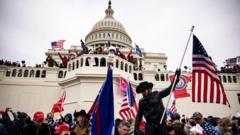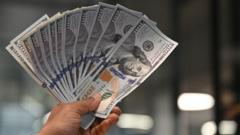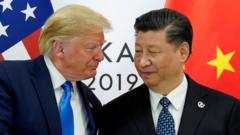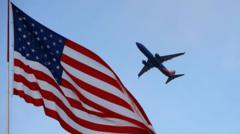President Donald Trump’s administration has officially enacted a sweeping tariff strategy, branding it “Liberation Day.” It imposes a universal 10% tariff on all imports while introducing additional, steep tariffs against nations that maintain high trade barriers against U.S. products.
Trump's Tariff Tidal Wave: A New Era of Protectionism
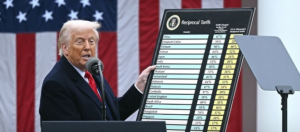
Trump's Tariff Tidal Wave: A New Era of Protectionism
A comprehensive new tariff strategy launched by President Trump aims to reshape global trade relationships.
China bears the brunt with a staggering total of 54% in tariffs, incorporating a new 34% reciprocal duty. Trump's team asserts this is a necessary action against China’s restrictive trade practices and allegations of intellectual property infringement.
The tariffs vary across nations:
- European Union: 20%
- Japan: 24%
- South Korea: 25%
- Vietnam: 46%
- Taiwan: 32%
While the initial 10% tariff became effective on April 5, the reciprocal tariffs began on April 9. Trump claims these measures are crucial for protecting American industries and rectifying long-standing unfair trade deals. “We’re not starting a trade war,” he stated; “We’re ending the one they’ve been waging against us for years.”
However, critics caution that these tariffs might inflate prices for American consumers and provoke a cycle of economic retribution, evidenced by China's immediate response involving increased tariffs on U.S. goods and restrictions on exports of rare earth minerals essential for U.S. defense and manufacturing.
As a result, market volatility has surged as investors assess the implications of this trade strategy. Analysts warn that Trump's actions could drastically reshape global economic dynamics if replicated by other countries. Despite mounting concerns, the administration is committed to this trade initiative, viewing it as a pivotal move to revitalize domestic manufacturing and re-establish U.S. economic supremacy internationally.
The tariffs vary across nations:
- European Union: 20%
- Japan: 24%
- South Korea: 25%
- Vietnam: 46%
- Taiwan: 32%
While the initial 10% tariff became effective on April 5, the reciprocal tariffs began on April 9. Trump claims these measures are crucial for protecting American industries and rectifying long-standing unfair trade deals. “We’re not starting a trade war,” he stated; “We’re ending the one they’ve been waging against us for years.”
However, critics caution that these tariffs might inflate prices for American consumers and provoke a cycle of economic retribution, evidenced by China's immediate response involving increased tariffs on U.S. goods and restrictions on exports of rare earth minerals essential for U.S. defense and manufacturing.
As a result, market volatility has surged as investors assess the implications of this trade strategy. Analysts warn that Trump's actions could drastically reshape global economic dynamics if replicated by other countries. Despite mounting concerns, the administration is committed to this trade initiative, viewing it as a pivotal move to revitalize domestic manufacturing and re-establish U.S. economic supremacy internationally.

